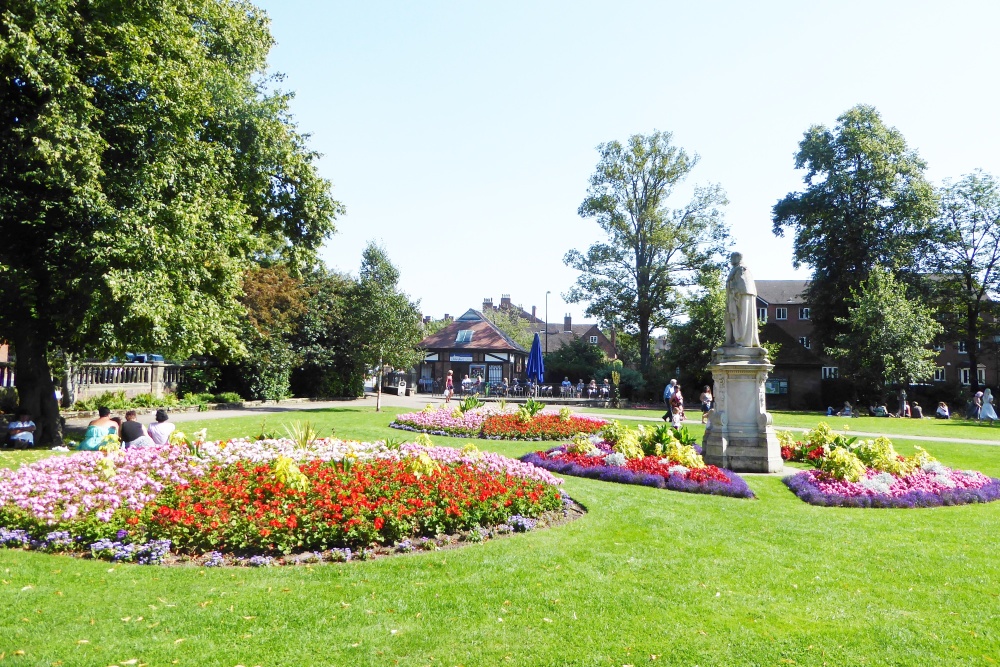"Drain the swamp" is a phrase much used by American politicians to mean rooting out actual or alleged corruption. Used literally, it refers to the draining of swamps to keep mosquito populations down and thereby to reduce the prevalence of malaria.
In 1840, Lomax of Bird Street issued a slim volume snappily entitled "An Enquiry into the History and Influence of the Lichfield Waters: Intended to shew the necessity of an immediate and final drainage of the pools". Published anonymously, it was in fact written by Dr. James Rawson, a physician who was practising in Lichfield by 1834 and still doing so in 1851. His little book contained a remarkable proposal - nothing less than the complete elimination of the chain of pools that divides Lichfield City centre from the Cathedral Close and the north side of the city. What drove Rawson to propose such a radical idea?
Hard though it may be to imagine today, the pools in 1840 were less than attractive. The Upper or Bishop's Pool had degenerated to the extent that it had become better known as the Town Marsh. Minster Pool was being periodically, if irregularly, cleaned out. Stowe Pool was a shadow of its former self, having largely silted up except for a small area near St Chad's Church.
Although at the time the science was imperfectly understood, Dr. Rawson was convinced that many of the evils experienced by the city - damp, fogs, stench, disease and in, earlier times, even full-blown plague - were the direct result of the continued existence of the pools. The learned Doctor's thesis invoked the laws of nature, whereby bodies of water naturally silt up over time, and castigated incompetent city fathers who had unrealistic expectations of the millers who were charged with maintaining the pools. Their rents were either too high or too low. The millers were either losing money and giving up - or profiting handsomely at the Corporation's expense.
Rawson also considered the impact of the noxious pools on health and life expectancy in Lichfield, comparing the City's drainage and sanitation to reports of a village of India that had recently suffered serious outbreaks of disease. He considered continuing to try to dredge the pools to be a waste of time and effort; better to drain them and turn the areas into productive land. As for the impact on views of the cathedral if the pools disappeared, his views were equally trenchant:
"... the cathedral of Lichfield is so exquisitely beautiful, that a duck-pond represented near it would tell with good effect in a print; the building and not the pond being the essential ornament. Without the building who would lavish praise on 'Stow's calm lake and grassy shore?'"
After calculating the costs of draining the pools and building cottages at Stowe to be £ 3,850 (and the consequent income from land and property to be £ 400 per annum), Dr. Rawson's polemic reaches its climax:
"All interested parties are called upon to resolve, after fair and full consideration, whether the Lichfield pools must be immediately - and for ever - drained. It has been forcibly and beautifully observed that 'there is but one way of commanding Nature; and that is by obeying her laws.' Her crying laws, geological and medical are that both the Lichfield pools be abolished, without delay; and by obeying and assisting these laws a benefit of some kind MUST result to man."
Strong stuff - but it had no immediate effect.
However, what Rawson could not have foreseen was that, within 20 years of his diatribe, responsibility for the pools would be transferred to the new South Staffordshire Waterworks Company. After dredging and improvement the Minster and Stowe Pools would become reservoirs and supply safe drinking water to the Black Country for more than a century. The silt resulting from the dredging was dumped in the Town Marsh and the firm ground thus created became the Museum Gardens.
Dr Rawson could hardly have dreamed that, 180 years on, the pools not only remain; but are recognised as a precious and valued element of Lichfield's landscape and heritage.
William Henwood
May 2021

The Museum Gardens in 2021
The site of the Bishop's or Upper Pool, which is now the Museum Gardens.
Photo: William Henwoood